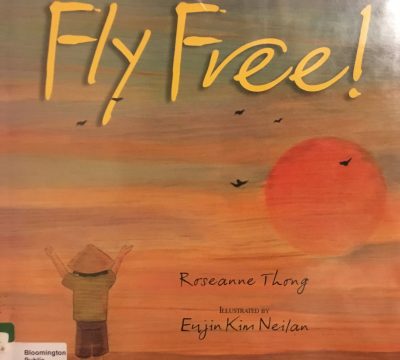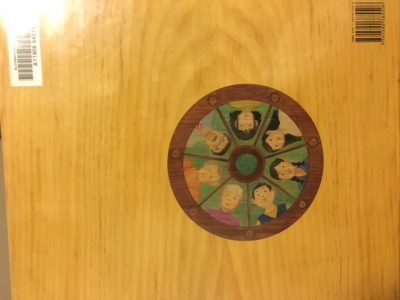- Title: Fly Free!
- Author(s): Roseanne Thong
- Illustrator/Photographer: Enjin Kim Neilan
- Publisher and Year: Boyds Mills Press, 2010
- Number of Pages: 30
- Genre: Fiction
- Analysis: Fly Free! is the story of a little Vietnamese girl named Mai. Mai loves to feed the birds and one day wants to set them free. After Mai performs a good deed, a wheel of karma is set into motion that eventually allows Mai to release the birds. Fly Free! teaches young children not only about the ideology of karma, but about Vietnamese traditions as well.
Fly Free! can be analyzed as a window, mirror, or door. For children who are from Southeast Asia, or children who are familiar with the culture, this book can be a mirror. For those who are not familiar with certain customs, or have never experienced the lifestyle of Mai, this book is a window or door. Fly Free! also uses ideological theoretical frameworks. I liked the fact that words that might be unfamiliar to children were italicized. For instance, words like, karma, samsara, and nirvana are all italicized. Moreover, the author defines the unfamiliar word so that the reader can get a better understanding of the text. The ideological framework in this story ties into cultural representation. For Vietnamese children, they not only see themselves in this book, but also values that they know. With this being a cultural book, I think it is important that the author had a background of working with Vietnamese children, as well as spending fifteen years in Asia teaching, writing, and learning the culture. By doing this, Thong is able to tell a more culturally accurate story through her personal experiences.
The illustrations in Fly Free! were created by Enjin Kim Neilan. The illustrations are very smooth and are reminiscent of a painting. The images are framed, so the reader is looking into the world of Mai throughout her journey. The frame around images in the book looks like wood, and the illustrations look like they were drawn on the wood background. The back cover of the book shows a wheel of life, samsara, which is a Buddhist belief, and an overarching theme in the story. I think that the gentle tones of the artwork in this book help to keep the peaceful feeling of the story.
Finally, in the author’s notes, Thong explains karma and other Buddhist beliefs. She describes her time traveling in Vietnam and how a student named Mai explained the Buddhists ideas of reincarnation, karma, and samsara to her. The lessons in Fly Free! go beyond borders. While children are, in fact, learning about Southeast Asian customs, they are also learning the importance of good character traits.


